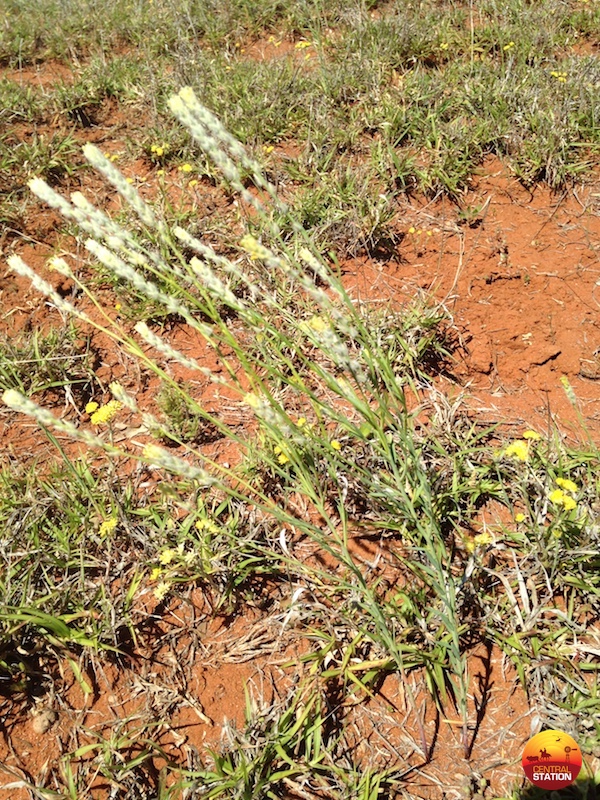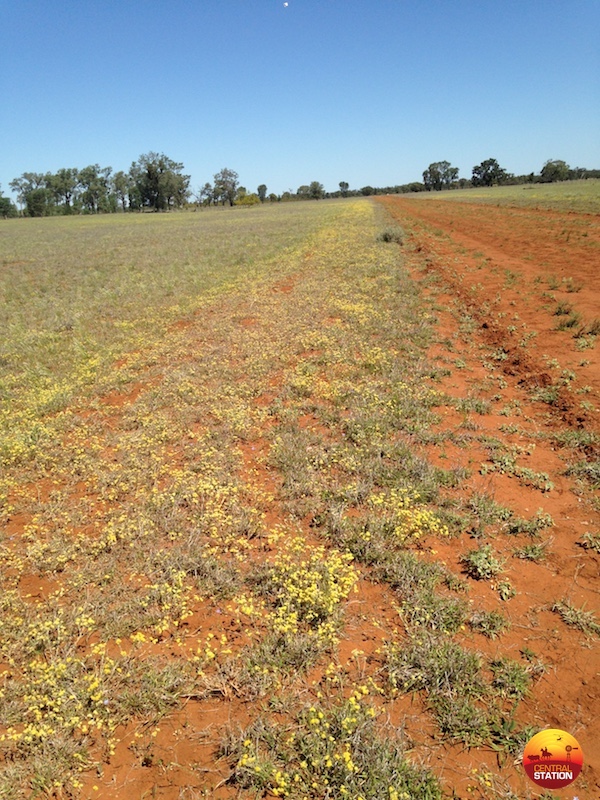The peril of Pimlea – Part 1
Host: Southampton
Written by – Kylie Savidge, Owner, Southampton Station.
Let me say that what I am writing here is based solely on personal experience in my area, and on Southampton with contributions from friends who live in this district. These are our first hand observations (Warning: For those of a more sensitive nature some of the photos here might be distressing to you).
Quite frankly, the Pimelea plant is a bastard of a thing that shows every evidence of being a super poison that has no antidote or cure; a plant that is as poisonous when it is young and green into full mature growth as it is when it is dead and still standing tall in amongst the grasses that grow here. There is also concern that when cattle are grazing so close to the ground they pick up the fluffy seeds hidden in the soil, inhaling and ingesting these which also contribute to the toxic effects.
 Pimelea plant close up.
Pimelea plant close up.

According to the most recent information issued in May 2011, DAFF (Department of Agriculture and Fisheries) QLD states that out of roughly 110 species of plant, there are three toxic species of Pimelea that affect livestock specifically cattle, sheep, and horses. These are Pimelea simplex, Pimelea elongata, and Pimelea trichostachya. The plant favours sandy and disturbed soil, but is not exclusive to these. (https://www.daf.qld.gov.au/animal-industries/animal-health-and-diseases/protect-your-animals/poisonings-of-livestock/pimelea),
Meat and Livestock Australia (MLA) have stated that this is most common in SW QLD, NW NSW, and Northern SA (https://www.mla.com.au/news-and-events/industry-news/keep-your-eyes-peeled-for-pimelea/) and the best way to manage Pimelea outbreaks is to shift all stock out of any paddocks that have this plant growing and onto different pasture, such as Mulga or agistment in areas that do not have this problem. Tough to do when you have limited resources or no country that doesn’t have Pimelea on it. The information in the above link by the MLA is to the point and informative for those who are not familiar with this plant and its widespread and devastating effects. This plant is impossible to spray with any sort of herbicide successfully as it covers such vast areas of country. To be able to spray Pimelea a license is required to acquire any herbicides that may be used. The spraying of roadsides and water catchment drains is feasible but over large areas it becomes very expensive to do and using herbicides that target broad leafed weeds can be more detrimental to your edible plant species than of help (http://era.daf.qld.gov.au/3069/)
The plant is ingested as a by-product of animals eating grass as Pimelea grows very thickly regardless of the growth of native plants and introduced grass species. In my opinion and firsthand experience it seems quite happy to poke its head up through any sort of competition and flourish merrily away. In better seasons when the grasses are green and plentiful it seems not to be so much of a problem, but when grass is drier and shorter after winter and stock are hungrily chasing what feed is left, appears to be when it raises its ugly head the most.
Its ability to wait for the right growing conditions is quite astounding, for it might be five years before you get just the right conditions for it to grow, generally rain into late autumn, winter and into early spring with milder winter temperatures that allow the dormant seeds to germinate and grow. And of course it grows far better after drought conditions have left the landscape bare of any other type of ground cover to compete.
Stock ingest the plant and over time poisoning occurs with symptoms varied between some and all of the following:
I have borrowed these from the link below but added my own personal observations.
- Chronic diarrhoea, more watery than solid and stinking to high heaven.
- Loss of condition, poor appetite.
- Rough coat.
- Depression, I have particularly found this to be true in bulls.
- Prominent jugular veins in the neck, oedema (soft swelling) of the head, brisket, and abdomen.
- Increased respiration rate, gasping for air, trouble breathing, mouths open, and lots of drooling and saliva.
- Heart rate increases and high blood pressure, as any extra stress placed upon them can cause sudden death.
- Reluctance to move anywhere for anything.
How to treat these symptoms?? Plenty of ideas and theories abound and much has been experimented with, some with marginal success, some with none. What is certain, however, is that there is NO success in saving any of these animals if nothing at all is done about it.
For cattle out in the paddocks loose lick high in protein and in the minerals that are in low supply naturally are fed all year round. Cattle will generally only eat supplements when they need it and go off it when it is not needed but by having it readily available you do not have to play “catch up” with trying to give them enough if it hasn’t been there for them. Paddocks that have trough water points only are also supplied with a liquid mineral supplement as well, depending on the cattle that are running there and what they require.

Personally, we have tried all that we can think of and that is available to us via professionals (the vet). These include common sense approaches such as removing stock from affected paddocks and pulling out the severely affected animals and bringing them home to the yards for intensive treatment with injections of Frusemide, 3 times daily, high protein diets plus added mineral supplements to their water and dry loose lick, good quality hay, grain mixes, and copra. Some of these live and some don’t, but we give them all an equal chance and it can be heartbreaking at the end of an intensive five days to then have to euthanize an animal you have fought to save but know you cannot do anything more for other than end their suffering. Drowning in the fluid in your lungs is NOT a nice way to die. After five days we have found that you will know if what you are doing is helping or if it is only prolonging the inevitable.
